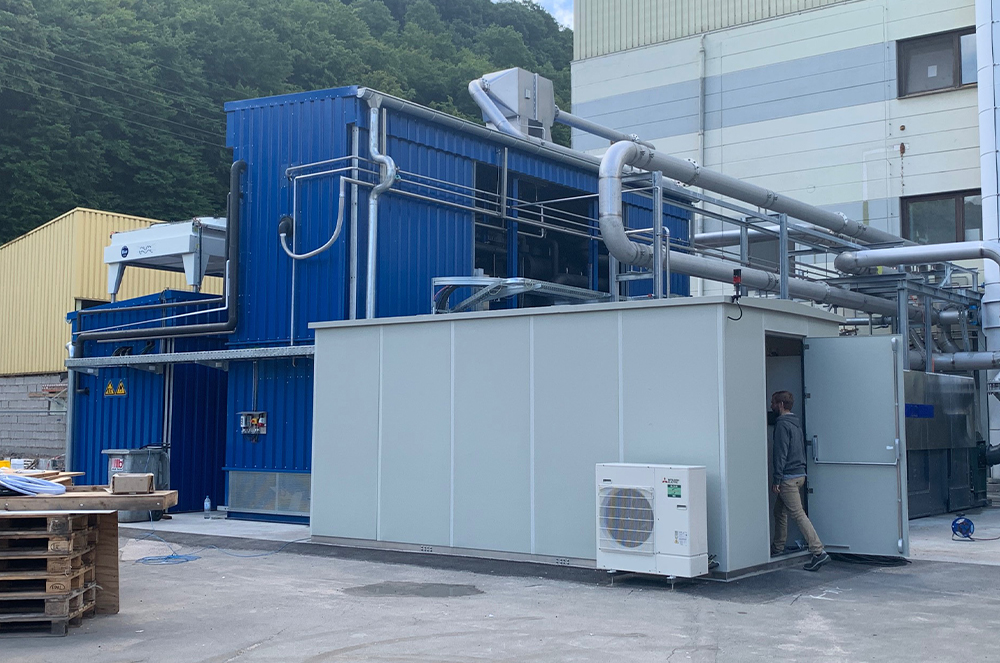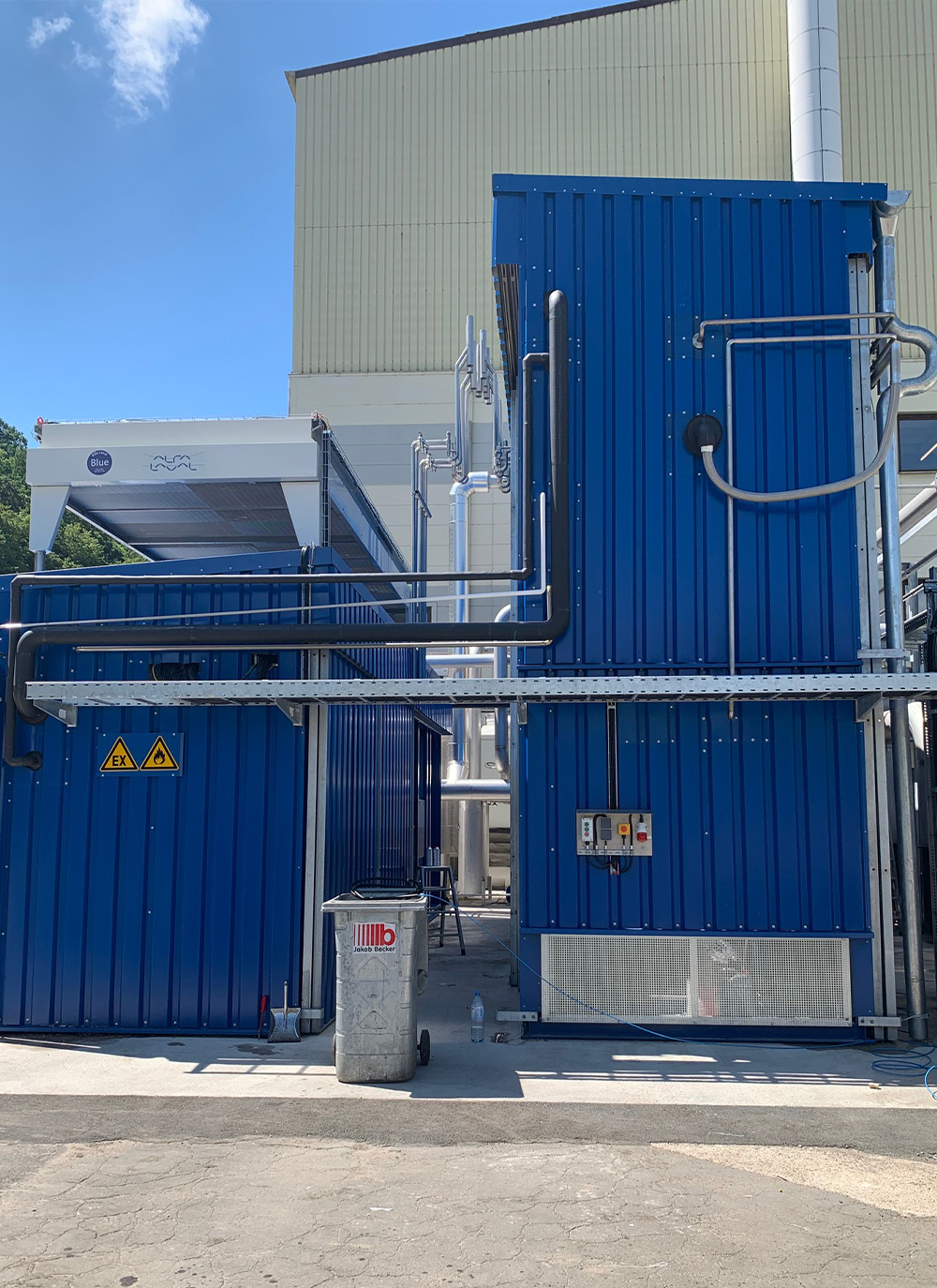
Adsorption plants
Adsorption plants are particularly suitable for solvent recovery if the volumetric flow is high and the solvent content is relatively low.
In these plants, the flow of process gases is guided over the adsorption media where organic components dissipate onto the surface. Porous materials such as activated carbon are especially suitable for this process. The large surface of the material allows the substances to be adsorbed quite well. But depending on the specific task, molecular sieves are also used as a medium in adsorption plants.
If the composition of the process gas includes water, the water content must be reduced first. This procedure is called pre-conditioning, and it increases the plant’s efficiency because less water can accumulate on the adsorption media.

The absorption capacity of the adsorption units is physically limited. But heating can restore this capacity because supplying heat energy reduces the material’s adsorption ability. The solvents are released again. This procedure is called desorption. The solvents which are released are stored in a buffer tank, and after a few more steps, the adsorption units can be used again.



